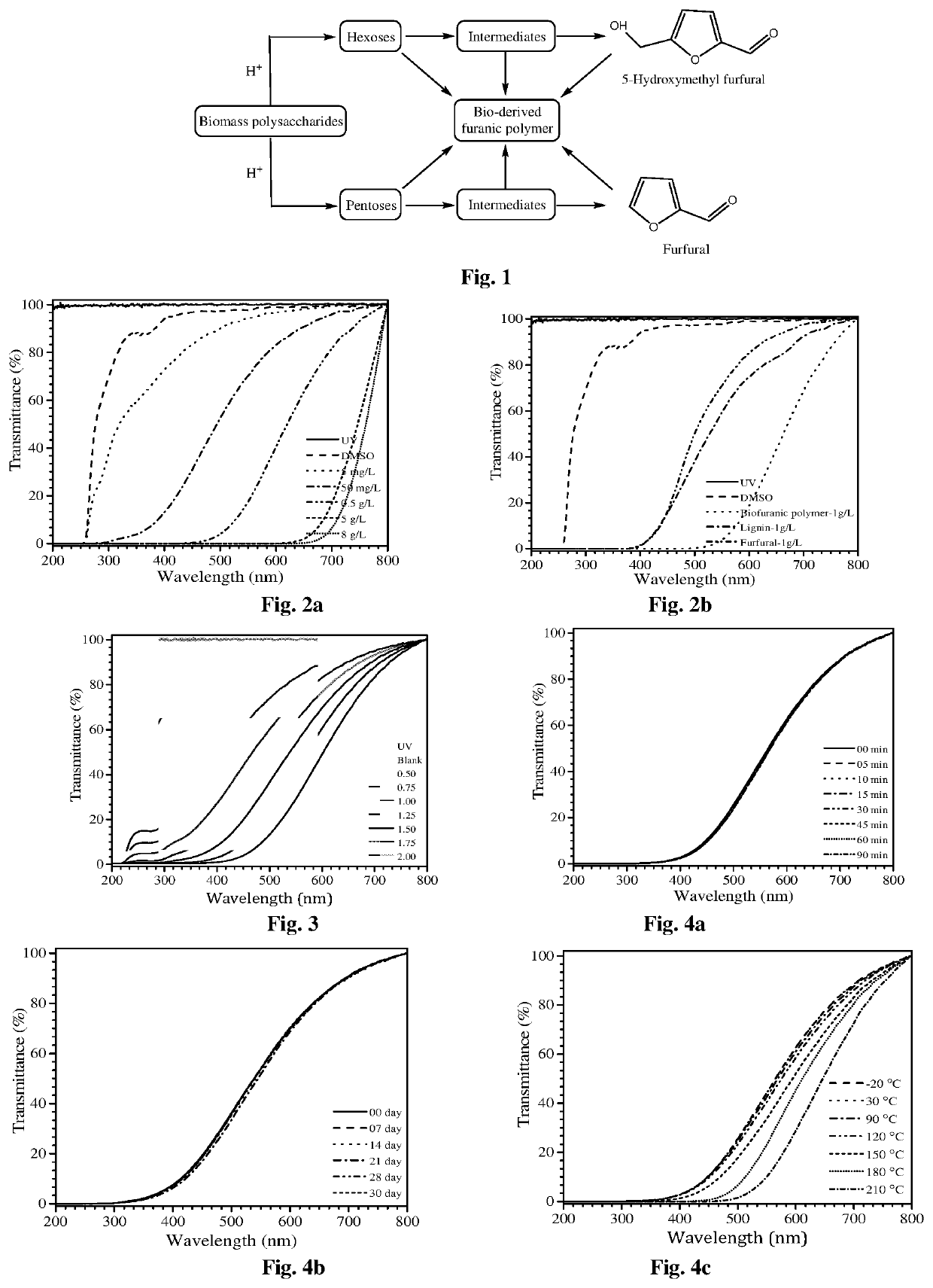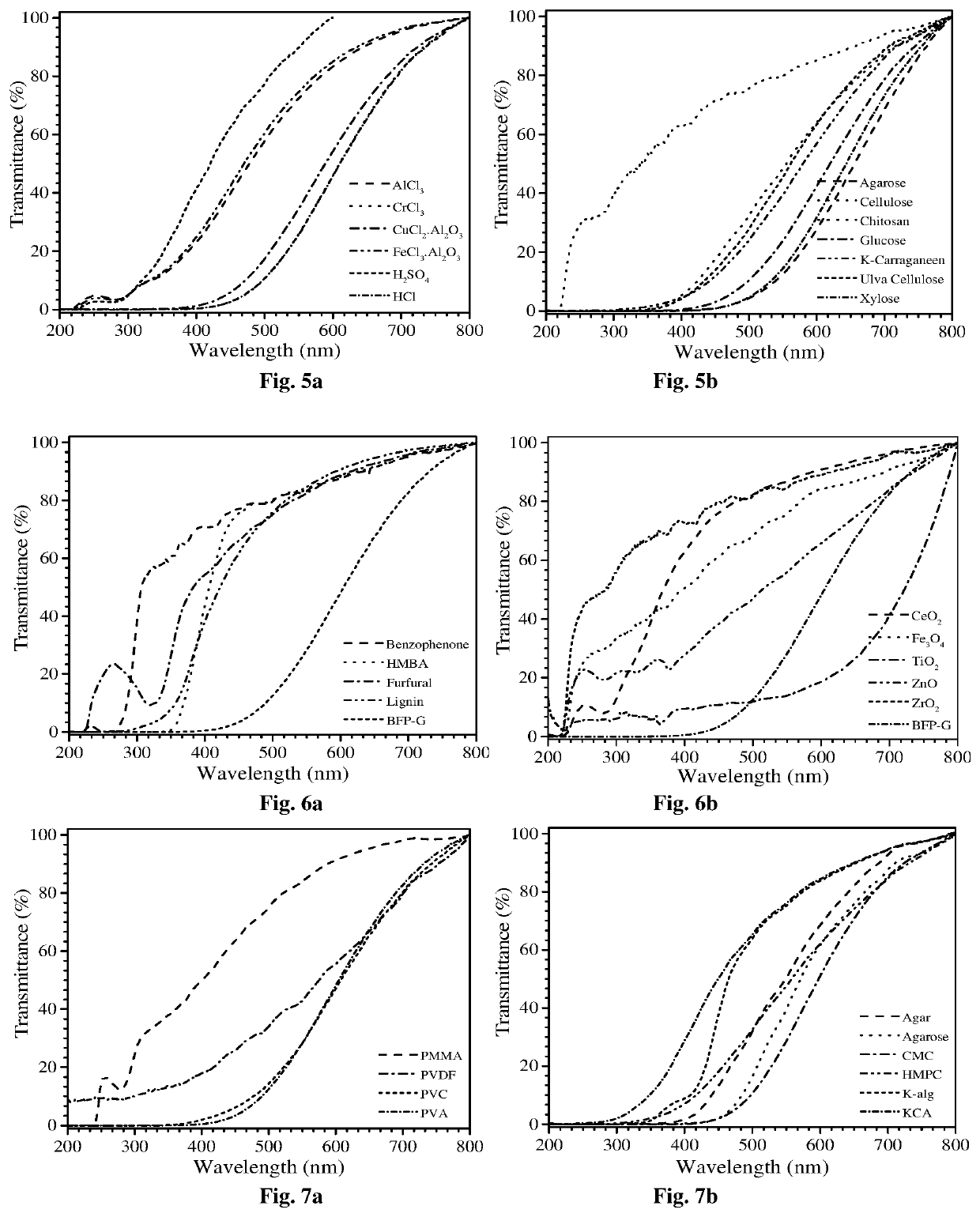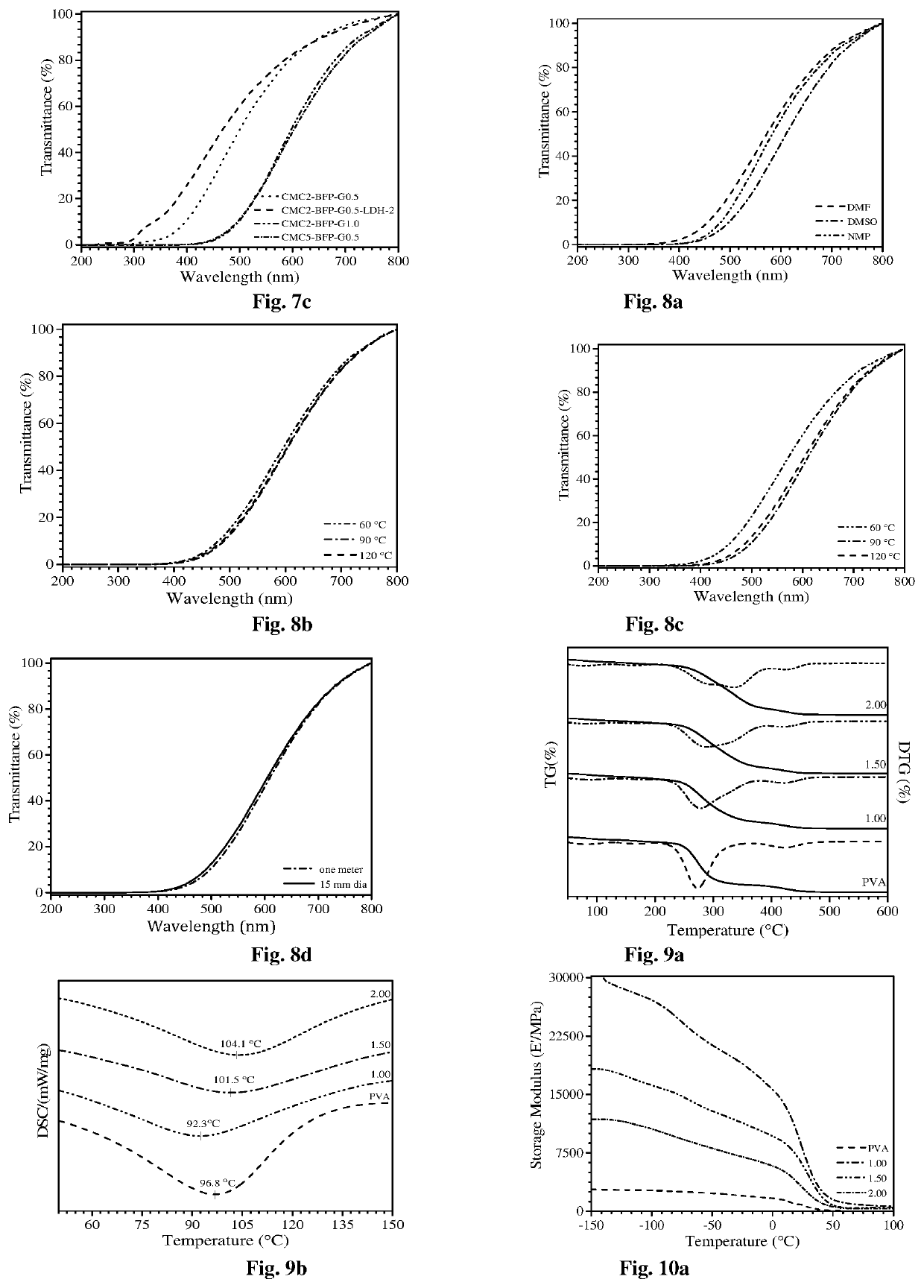UV shielding bio-derived furanic polymers
a technology of bio-derived furanic polymers and uv shielding, which is applied in the field of providing bio-derived furanic polymers, can solve the problems of reducing the durability and stability of films, and reducing the effectiveness of uv shielding
- Summary
- Abstract
- Description
- Claims
- Application Information
AI Technical Summary
Benefits of technology
Problems solved by technology
Method used
Image
Examples
examples
[0101]Example: 1a Assessment of UV Shielding Properties at Minimum Loading of BFP-G in DMSO (5 mg / l)
[0102]For preparation of BFF-G, 0.9 g of glucose and 0.1 mmol HCl (1 N aqueous) catalyst were added to 3 g DMSO which was preheated to 120° C., and then stirred at 800 rpm for 4 h. Then this mixture was cooled to room temperature (25° C.) and added to 6 g water to precipitate BFP. BFP was separated by centrifugation, and washed 2 times each with 6 g of water, and 2 times with 6 g MeOH and then dried in vacuum at 25° C. for 6 h and in air oven for 12 h at 105° C. The amount of BFP obtained is 0.112 g. Then BFP-G was dissolved in DMSO at a concentration 5 mg / l at 25° C. The homogenous BFP solution was tested for UV shielding efficiency analyzed in the range of 200-800 nm by UV-vis absorption spectroscopy given in FIG. 2a. The UV shielding was observed up to 258 nm at 0.5% transmittance level and optical transparency was 99.2% at 700 nm.
Example: 1b Assessment of UV Shielding Properties a...
PUM
| Property | Measurement | Unit |
|---|---|---|
| thickness | aaaaa | aaaaa |
| temperature | aaaaa | aaaaa |
| temperature | aaaaa | aaaaa |
Abstract
Description
Claims
Application Information
 Login to View More
Login to View More - R&D
- Intellectual Property
- Life Sciences
- Materials
- Tech Scout
- Unparalleled Data Quality
- Higher Quality Content
- 60% Fewer Hallucinations
Browse by: Latest US Patents, China's latest patents, Technical Efficacy Thesaurus, Application Domain, Technology Topic, Popular Technical Reports.
© 2025 PatSnap. All rights reserved.Legal|Privacy policy|Modern Slavery Act Transparency Statement|Sitemap|About US| Contact US: help@patsnap.com



